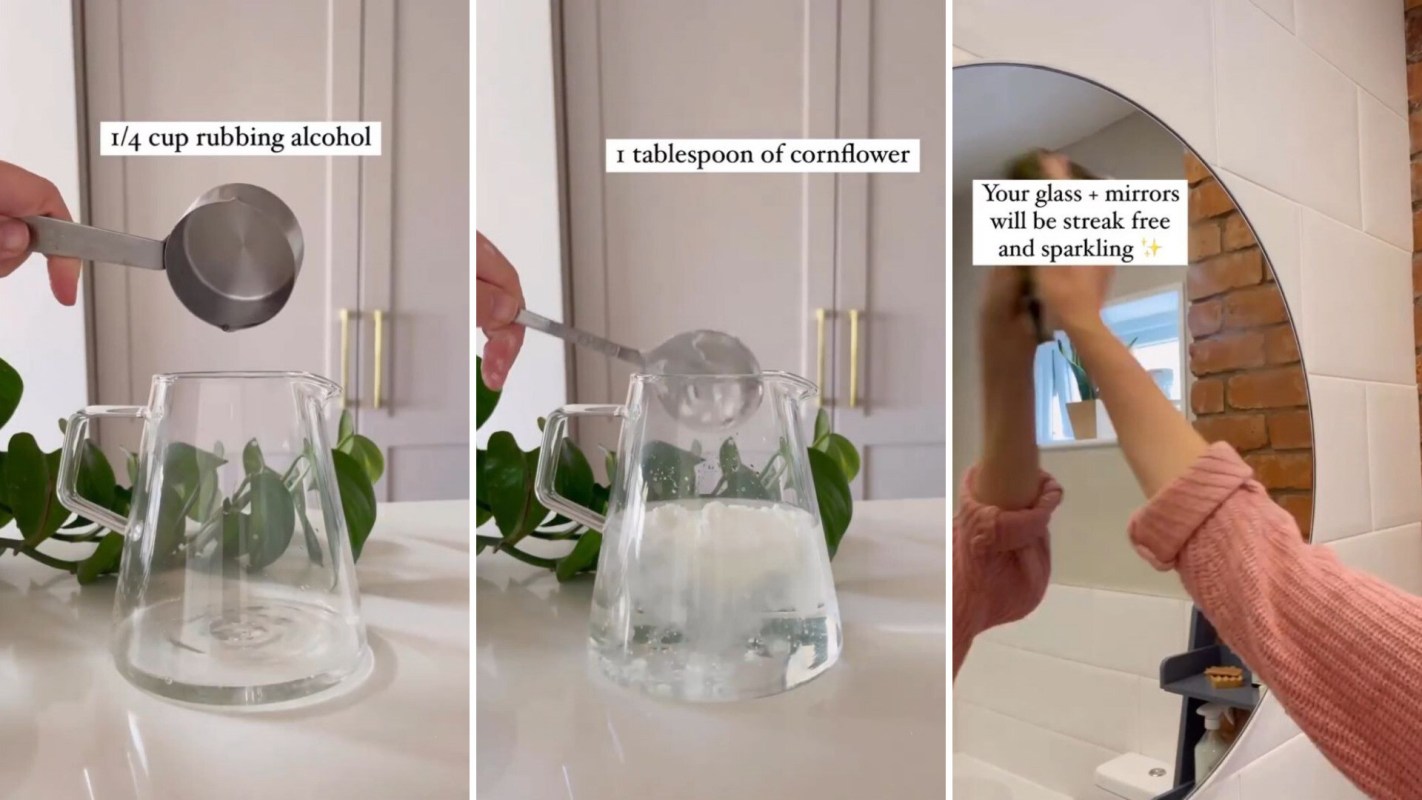A green cleaning influencer has shared how to concoct your own eco-friendly glass cleaner, which will help you to remove nasty chemicals from your home.
The scoop
In a popular Instagram reel, Kate (@my_plastic_free_home) demonstrates how to make a powerful glass cleaner from staple ingredients in your cupboard, claiming it will make your glass "streak free and sparkling in seconds."
Using a glass jug as a receptacle, she mixes together a one-quarter cup of rubbing alcohol, two cups of water, and one tablespoon of cornstarch.
Cornstarch is naturally abrasive, which means that the liquid will work like a soft scrub on more difficult-to-tackle grime and dirt.
Kate then stirs the mixture with a spoon before pouring it into a reusable glass spray bottle.
The liquid is ready to use immediately. Kate sprays it onto a smeared bathroom mirror and wipes it off with a cloth, leaving the glass looking sparkling and spotless.
"Works like magic," she wrote in a caption. "It just makes cleaning so much easier."
How it's helping
Using a homemade cleaner like Kate's is far cheaper than traditional store-bought cleaning fluids, and they're also kinder to our health and the planet.
Some glass cleaning fluids can worsen the air quality in your home because they contain "volatile organic compounds" — chemicals that evaporate easily at room temperature.
While VOCs are unlikely to cause harm in small doses, they tend to accumulate in the air with prolonged use. The concentration of VOCs indoors can be 10 times higher than outdoors.
Excessive exposure to some VOCs causes headaches, skin irritation, nausea, and even breathing difficulties. If you crack a window to ventilate your home, VOCs can also escape and contribute to smog.
Two chemicals commonly found in glass cleaners are nitrogen and ammonia, which the EPA has labeled as environmentally hazardous.
If nitrogen is poured down the sink and makes its way into our waterways, it will stimulate nutrient loading, which causes toxic algae to bloom. This then reduces oxygen in the water, making it difficult for local aquatic wildlife to breathe.
High levels of ammonia in the water supply, meanwhile, can cause a toxic build-up of the chemical in marine animals' bodies.
On the other hand, while rubbing alcohol is still toxic in high doses, it is considered less harmful than other cleaning fluids. The Environmental Working Group says that its marine toxicity is low and that it is also biodegradable.
What everyone is saying
Instagram users were seriously impressed with Kate's cleaning hack, particularly her tip about including cornstarch.
"Oh good to know because I struggle with eco glass cleaner a lot!" one user commented.
"I use vinegar and alcohol but never tried cornflour. Will try this," said another.
"Cornflour is great for cleaning! It's non-abrasive so it won't damage surfaces," another user added.
Join our free newsletter for easy tips to save more, waste less, and help yourself while helping the planet.









